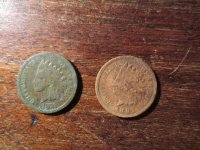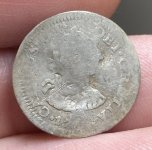cp90macs
Newbie
It's indeed a mighty hefty price tag that will keep me from buying one. The report from the AZ and NV gold feilds are looking pretty good though. It is finding small and 1/2 oz nuggets on grounds that have already been pounded by all previous Minelabs and others detector. The 14 inch coil is cutting down it maneuverability and others accessories are not readily available yet so time will tell if a smaller coil will be available? The coil cable does run through the shaft so who knows if and where the connection to the electronic box is? So coil changing may not be a option at all. It does run super quiet on the mineralization grounds we got here in AZ and handle emi noises really good. No warbling of the threshold when a aircraft fly overhead at 32,000 feet like the GPX 5000. I know some detectorist that have already found enough gold on pounded grounds to paid for it in the short 4 last week's since it have been available already! If you are first with new technology. ...








